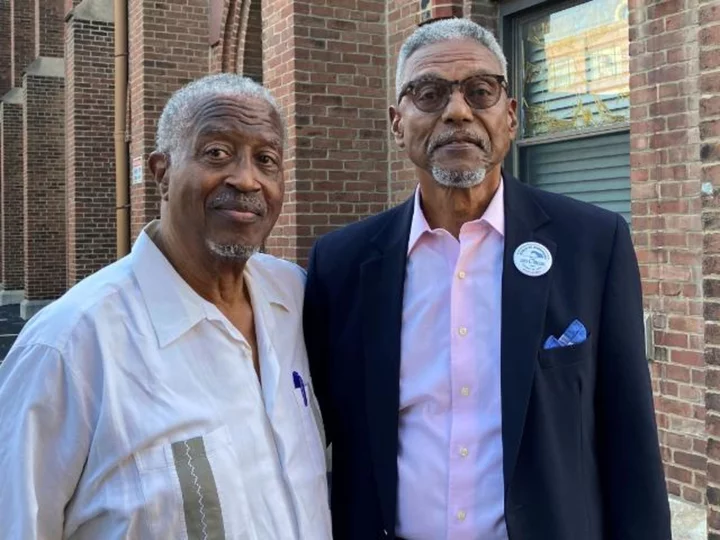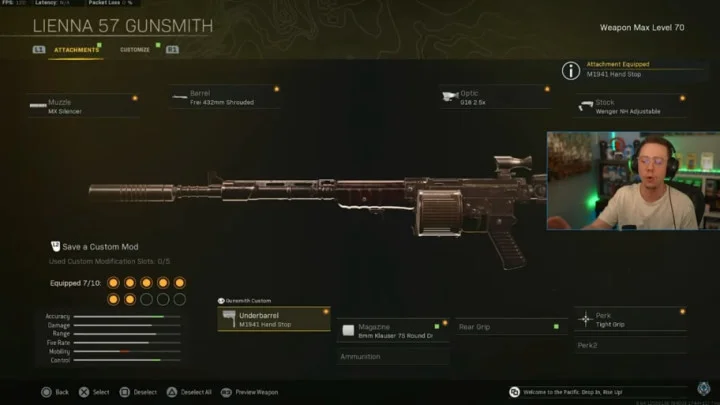Former residents of a low-income, majority-Black housing development in St. Louis, Missouri, are seeking restitution from the US Army over a Cold War-era testing program they say made them ill.
Ben Phillips was five years old when he moved with his family into the Pruitt-Igoe housing development, a predominately-Black and low-income housing complex located northwest of downtown.
Phillips, now 73, told CNN he had fond memories of his decade spent growing up in the high rise.
"There were two separate developments. Igoe for Whites and Pruitt was for Blacks," he said, adding despite the segregation "it was a very wonderful, tranquil area, a brand-new high rise."
But Phillips said he also recalls chemical mist being sprayed from vehicles and from rooftops of several buildings in the housing development.
At the time, he said residents thought the mist was just a pesticide.
"The majority of it was done at night. So, you know, you're at home, it's a summer evening, you got your windows opened up on the seventh floor because you don't have air conditioning. And it's spewing this stuff off the roofs."
As he got older, Phillips' perception of what he inhaled as a child changed.
Army Dispersion Tests
Throughout the nuclear arms race of the 1950s and 60s, the US military feared an enemy attack using biological warfare, according to online government records.
To prepare, according to the National Institutes of Health, the US Army conducted experiments in 33 locations and cities across the country, including St. Louis, to test how an aerosol biological agent might spread in different environments.
Government records show the Army sprayed zinc cadmium sulfide in these dispersion tests, an inorganic compound composed of zinc, cadmium, and sulfur that glows bright yellow under ultraviolet light.
At the time, the NIH said the compound was thought to be harmless to humans, animals and plants. Today, the Army still maintains the substance used was non-toxic.
In a statement to CNN, Army spokesperson Ellen Lovett said five examinations of the Army's use of zinc cadmium sulfide in their aerosol dispersion tests have all shown the mist was non-toxic.
"None of the reports contained evidence of a radioactive component to the zinc cadmium sulfide dispersion tests," Lovett said in the statement.
But for Phillips, the military's assurances were not enough.
In the decades since the testing, Phillips said many family and friends who were exposed to the mist have developed unexplained illnesses, including various forms of cancer.
"I just feel that there was a cover-up," he said.
In 2013, Phillips filed a lawsuit seeking restitution for those impacted in the Army's dispersion program. A federal judge later dismissed the suit on the grounds that the Army and its contractors were indemnified by the government.
Phillips told CNN the judge's ruling felt like "the door was just shut, slammed in our face" for former residents who saw the lawsuit as a means to obtain justice.
In response, Phillips and several other former residents formed the non-profit organization, Pruitt-Igoe Historical Accounting, Compensation, and Truth Seeking (PHACTS).
He said the organization is fighting to add former Pruitt-Igoe residents to a list of neighborhoods being considered for compensation by the federal government because of separate radiological testing in St. Louis.
"The people of St. Louis have borne the burden of [the Manhattan Project] — and now it's time for their government to make it right," Sen. Josh Hawley said in a press release announcing the legislation in July.
"The federal government needs to pay the medical bills for any St. Louis resident who has contracted cancer or an autoimmune virus or a genetic disorder because of exposure to radioactive contamination," Hawley added.
What's 'behind the fog'
Lisa Martino-Taylor, a recently retired sociology professor at Southern Illinois University, has studied the Army's program for decades.
After filing multiple requests under the Freedom of Information Act, Martino-Taylor said she spent years looking at declassified documents about the dispersion program and detailed her findings in a book called, "Behind the Fog."
Her research uncovered army maps that place Pruitt-Igoe within the army's testing area.
She told CNN she believes the stories told by former residents of Pruitt-Igoe that the mist they inhaled made them sick.
"They were developing this stuff as a weapon, and they knew it could harm people," she said.
The NIH recommends further testing to determine the toxicity of zinc cadmium sulfide but classifies cadmium sulfide as a hazardous substance that may cause cancer and damage to internal organs as a result of prolonged or repeated exposure.
According to the NIH, chronic exposure to zinc sulfide can cause anemia, lethargy, a decrease in good cholesterol, damage to the pancreatic and reproductive systems. It can also cause ataxia, an illness where people lose control of muscles in their arms and legs, according to Johns Hopkins School of Medicine.
Phillips said his family has experienced similar side effects.
"I had a little sister who was having convulsions when she was about a year and a half old. It went on for about two and a half years, and then stopped," he said.
Phillips told CNN he believes his sister's illness is connected to the testing because the convulsions ended once the family moved away from Pruitt-Igoe.
Other residents from Pruitt-Igoe told their stories to filmmaker Damien Smith for his documentary, "Target St. Louis: Volume 1."
Smith told CNN he heard some of the most shocking claims about Pruitt-Igoe from his grandmother, who lived in St. Louis.
"I started doing some more research about it and it infuriated me that they can test on a population that they deemed to be basically sub-human," he said. "Definitely stripped them of any constitutional rights."
Smith told CNN after talking with former residents for his documentary, the most common illness they cited was cancer. Pruitt-Igoe was demolished in 1972 and the site has since remained vacant.
For Phillips, restitution is not just about giving money to individuals. He said it's also about making sure Americans are educated and aware of the harms of the past.
"This happens so often to marginalized communities -- African American communities -- because they're easier to prey upon because, at least back then, they hardly had a voice," he said.









